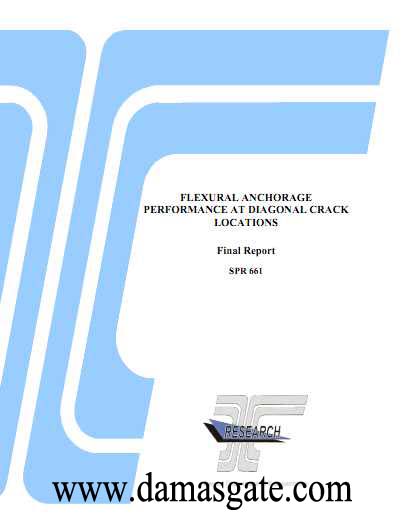Flexural Anchorage

FLEXURAL ANCHORAGE PERFORMANCE AT DIAGONAL CRACK LOCATIONS
Final Report
SPR 661
by
Christopher Higgins, Mary Ann Triska and Joshua Goodall
Structural Engineering Group Department of Civil and Construction Engineering
Oregon State University 220 Owen Hall
Corvallis, OR 97331
for
Oregon Department of Transportation Research Section
200 Hawthorne Ave. SE, Suite B-240 Salem OR 97301-5192
and
Federal Highway Administration
400 Seventh Street, SW Washington, DC 20590-0003
December 2010
1.0 INTRODUCTION
Large numbers of reinforced concrete deck girder (RCDG) bridges were constructed during the interstate system expansion of the 1950s and are approaching the end of their originally intended design lives. Over the last 60 years, service loading has increased in terms of volume and magnitude, thereby placing a higher demand on the system than originally envisioned. Compared to the present AASHTO-LRFD standards, the provisions of the 1950s allowed for higher shear stress in the concrete, thus reducing the amount of transverse steel required. The 1950s also saw the introduction and widespread use of standardized deformed reinforcing bars. Compared to proprietary reinforcing bars, standardized deformed bars were believed to provide adequate anchorage without the need for hooks and bends. As a consequence, designers terminated flexural steel without special detailing where it was no longer needed by calculation, while in the past, proprietary reinforcing bars would have been bent to ensure anchorage. Due to the combination of age, use, and what is now understood to be poor detailing, many RCDG bridges exhibit diagonal cracking in the stems. These cracks are sometimes associated with the flexural bar terminations and have been a cause of concern from some bridge engineers and owners.
Download
http://s18.alxa.net/s18/srvs2/01/Fl....Anchorage.rar